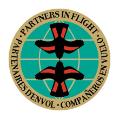Bird Conservation
Bird Conservation
by Natalie Dubois
The beauty and grace of birds has long captured the human imagination, just as their sound and color can grab our attention at any moment. More than 800 species of native birds inhabit the United States for at least part of their lives, meaning that few people have failed to be captivated by the glimpse of a particular bird. They inhabit our forests, grasslands, deserts, wetlands, coastlines, and urban areas, so at first glance, they appear to surround us – yet many populations face severe decline.
As a natural resource, birds provide critical services to the ecosystems we share – serving roles in dispersing seeds and pollen, cycling nutrients, controlling insect, rodent, and other populations (Sekercioglu et al., 2004). In addition to this invaluable function as an ecological resource, birds are also big business. In 2006, the United States’ 48 million birders accounted for $35 billion dollars in retail sales and contributed $82 billion to the U.S. economy (Carver, 2009).
However, birds – and the places they live – are threatened, primarily as the result of human activities. Habitat loss and degradation, resulting from activities such as sprawling development, industrial agriculture, energy production, and natural-resource extraction present major challenges to bird populations. Invasive species pose threats, too, by altering habitats, increasing predation and competition for food and nest sites, and introducing diseases. Climate change has already begun to alter the behavior of migrant birds. As temperatures increase, bird populations have been observed wintering farther north and returning to breeding grounds earlier in the spring.
The recent release of the State of the Birds Report (2011) joins a number of reports highlighting the plight of birds in the United States, and throughout the world. It reports dramatic reductions in grassland and aridland bird populations along with smaller but significant decreases in forest birds. Successful conservation efforts are beginning to show results for wetland birds, but a number of species still face severe threats. Moreover, these declines are not limited to rare species or species with small populations. Common birds are also disappearing (National Audubon Society, 2007); in some cases – such as the Northern Bobwhite and the Eastern Meadowlark – by as much as 80% over the past half-century.
Conservation Action
Birds do not recognize the boundaries of private and public land, so conserving habitat for them requires the combined efforts of government agencies, land trusts, conservation groups, landowners, and citizens alike. In North America, nearly two dozen Joint Ventures – regional partnerships of public and private organizations overseen by the U.S. Fish and Wildlife Service – coordinate regional plans that address the needs of birds occurring in specific landscapes. Other initiatives such as the North American Bird Conservation Initiative (NABCI) bring many of these groups together to work towards common bird conservation goals. At the state level, comprehensive wildlife conservation strategies that target bird species of greatest conservation need are detailed in each state’s Wildlife Action Plan.
Across North America, the Important Bird Areas Programs overseen by the American Bird Conservancy and National Audubon Society identify areas providing essential habitat for bird populations. The identification of an Important Bird Area (IBA) is a first step in prioritizing on-the-ground conservation activities that benefit birds. To qualify as an IBA, a site must support either species of conservation concern or species that are vulnerable because of their dependence on restricted sites or habitat types for breeding, wintering, or migration. The IBA Program offers opportunities for partnerships among landowners, conservation groups, and government agencies in efforts to conserve and manage these critical sites.
Bird Conservation Highlights
-
Audubon Important Bird Areas
As a global effort to identify the most important places for bird populations and to focus conservation efforts on those sites, IBAs represent the National Audubon Society's lead conservation initiative because the most severe threats to bird populations are habitat-based.
-
Partners in Flight
Created in 1965, the Land and Water Conservation Fund (LWCF) is the largest source of federal money for park, wildlife, and open space land acquisition.
-
Citizen Science
Every year, thousands of volunteers make important contributions to bird studies. In fact, many would not be possible without their help.
-
Birding and Wildlife Trails
Texas was the first state to establish an official birding trail, but today more than 35 states have followed suit to create a series of drivable paths and loops across country.
-
Avian Data Resources
The availability of bird survey and monitoring data continues to grow as several initiatives publish their databases and provide public access through their websites.
More About Bird Conservation
-
All Bird Conservation
by Teton Regional Land Trust
-
Prairie Chickens Gain Habitat
by Iowa Natural Heritage Foundation
-
Joint Ventures in Bird Conservation
-
Migratory Bird Conservation Fund
-
North American Wetlands Conservation Act





